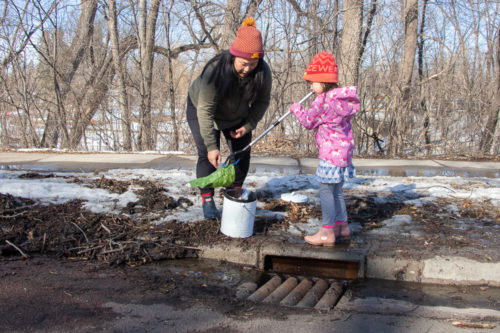On climate justice: Prepare for flood season

Climate change, flooding and equity
As climate change leads to periods of heavy and frequent rain as well as sudden snowmelt, Ramsey County will experience more flooding. According to maps produced by the First Street Foundation*, about 9% of properties in the county are at risk of being severely affected by flooding. It is most often low-income, Black/African American, American Indian and other underrepresented communities who live in areas prone to flooding. These populations are least likely to have flood insurance, access to transportation during an evacuation, cash on hand, or the ability to relocate.
Flooding and health
The most obvious health impacts of flooding are injury or death during the flood event, however people’s health often suffers even after the rain has passed and water subsided.
-
Floods can contaminate drinking water and food supplies with sewage or hazardous waste, leading to illness and worsening food insecurity.
-
Moisture from flooding can encourage mold growth worsening respiratory illness and asthma.
-
The trauma, property damage and economic stress that floods bring can worsen mental health conditions.
What you can do
You can help prevent or reduce flood damage to your property by keeping gutters clear of debris, elevating indoor utilities (like furnaces and water heaters) to protect them from flood water, adopting a storm drain in your community and practicing alternative land management strategies in your yard. Ramsey County emergency management offers tips for preparing and cleaning up flooded property too. You can also contact your elected officials to advocate for sustainable development, ecologically diverse landscapes, water-permeable surfaces and other sustainable stormwater infrastructure.
This article is featured in Green Ramsey, an environmental health newsletter from Ramsey County.
Learn more about and subscribe to Green Ramsey.